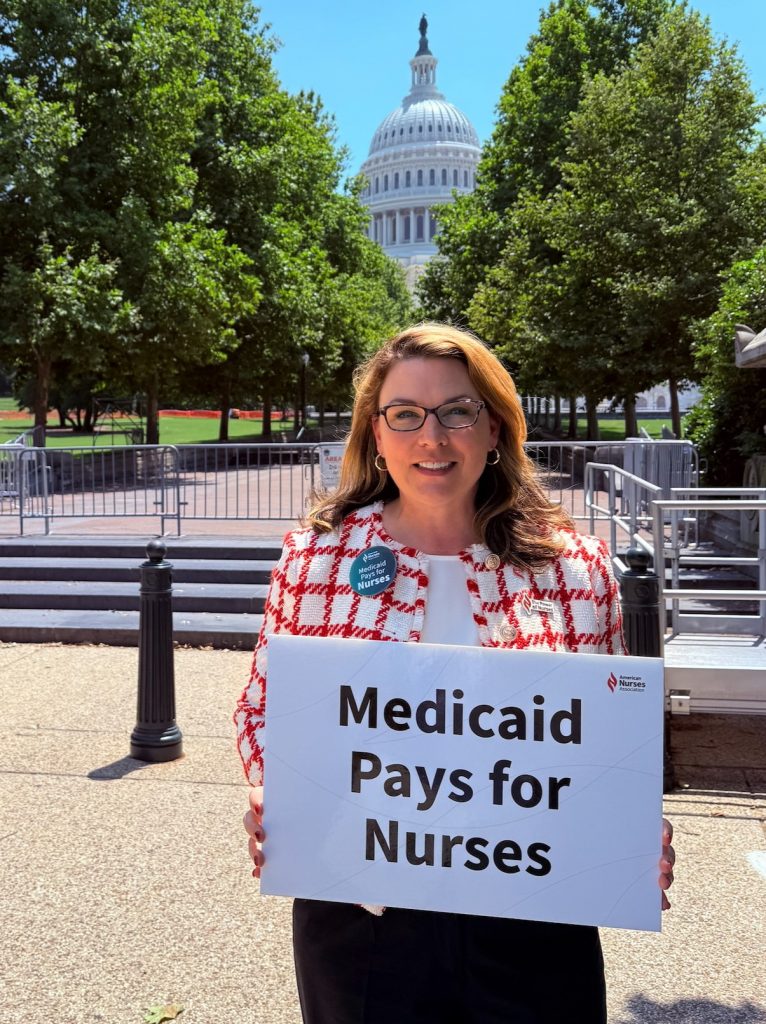The American Nurses Association (ANA) plays a vital role in shaping federal healthcare policy through regulatory advocacy, particularly by engaging with the Centers for Medicare & Medicaid Services (CMS) during its annual rulemaking cycle. Each year, CMS proposes payment rules to update the Medicare payment program, influencing quality reporting, practitioner reimbursement, and emerging healthcare priorities.
These proposed rules typically have a 60-day comment period—allowing stakeholders to review the proposals and submit comments through regulations.gov. After the 60-day comment period closes, CMS reads and counts every comment to determine which proposals should be finalized or changed from the proposed rule and implement the policy in the next fiscal year.
2026 Payment Rules
In the 2026 cycle, ANA reviewed the proposed rules and determined which proposals impact nursing practice the most and submitted detailed comments to ensure the nursing profession’s voice is represented, including the role of Advanced Practice Registered Nurses (APRNs) and their scope of practice.
A consistent theme across the proposed 2026 rules was the removal of quality metrics related to Social Determinants of Health (SDOH) and equity, replaced by new measures focused on well-being, nutrition, and related categories. Additionally, the role of AI, digital health and telehealth were also seen throughout the proposed 2026 rules. Finally, another widespread suggested change was the elimination of COVID-19 vaccination reporting requirements for healthcare personnel, reflecting the end of the public health emergency. ANA responded to the shift in quality metric reporting by advocating for the retention of SDOH metrics and emphasizing the importance of nurses in delivering person-centered care across all healthcare settings. ANA, across its comments, stressed the importance of evidence-based quality measures, workforce metrics like nursing turnover, and regulatory flexibility to support telehealth, safe staffing, and nurse-led care planning.
ANA also submitted comments to the Administration’s Requests for Information (RFIs) on deregulation in healthcare and across the department of Health and Human Services as well as in the context of digital health. These comments reinforced the need to eliminate regulatory barriers that prevent APRNs from practicing to the full extent of their training and licensure.
Across specific payment systems, ANA’s comments were tailored to the unique challenges and opportunities in each care setting:
- Physician Fee Schedule: ANA’s comments focused on telehealth and AI flexibilities, reimbursement, the removal and addition of quality measures, and ensuring nurses are included in the implementation of new metrics.
- Hospital Outpatient Prospective Payment System: ANA’s comments emphasized the role of nurses in coordinated care and urged CMS to support rural access, innovation, and transparency. Key issues included telehealth reimbursement, hospital price transparency, practitioner terminology, and supervision authority.
- Skilled Nursing Facility Prospective Payment System: ANA’s comments advocated for retaining SDOH and health equity measures, highlighting the importance of nursing staff turnover metrics and new quality indicators related to well-being, nutrition, and delirium.
- Home Health PPS: ANA’s comments opposed the removal of SDOH metrics and called for greater nurse involvement in developing quality measures. ANA also stressed the need to maintain nursing visibility in patient surveys and electronic health records, balance functional and outcome-based measures, and eliminate outdated COVID-19 vaccination metrics.
- Hospice Prospective Payment System: ANA’s comments supported allowing APRNs to conduct and sign hospice recertification attestations, called for immediate implementation of the Hospice Outcomes and Patient Evaluation assessment tool, and highlighted nurses’ role in applying quality metrics for patient-centered care.
- Inpatient Psychiatric Facility Prospective Payment System: ANA’s comments backed the removal of COVID-19 vaccination reporting given the end of the public health emergency but opposed eliminating SDOH measures. ANA emphasized nurses’ contributions to developing new quality metrics and advocated appropriate staffing to improve outcomes and retention.
- Inpatient Rehab Facility Prospective Payment System: ANA’s comments supported removing COVID-19 vaccination reporting and opposed eliminating SDOH assessments. ANA highlighted nurses’ role in ensuring holistic care and developing complementary quality measures.
- Inpatient Prospective Payment System: ANA’s comments urged CMS to remove regulatory barriers for APRNs, retain equity-focused quality measures, and engage nurses in shaping hospital quality programs. ANA also supported ending COVID-19 vaccination reporting mandates.
Overall, ANA’s regulatory advocacy in the 2026 CMS rulemaking cycle focused on preserving and enhancing the visibility, authority, and impact of nurses in all healthcare settings and the preservation of SDOH data metrics.
ANA consistently emphasized the need for evidence-based quality measures, the removal of administrative burdens like outdated COVID-19 vaccine reporting, and regulatory flexibility to empower nurses and improve patient outcomes. The ANA Policy and Government Affairs team continue to track all the payment rules as they are finalized.

